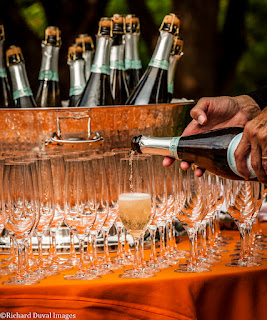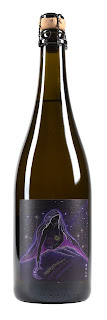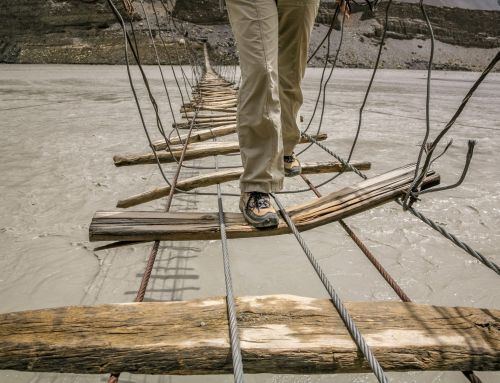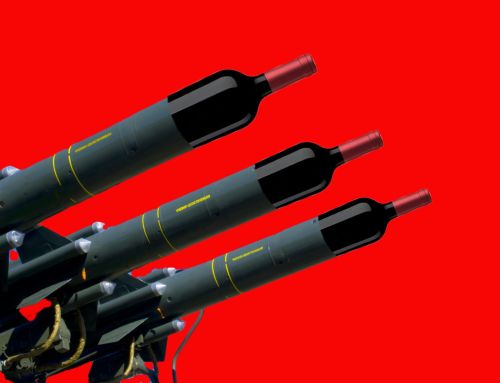Sparkling wines are on the rise in Washington. One way to know this is producers exploring appellations where these wines haven’t previously been made and working with different varieties. In recent years, two appellations – Red Mountain and Walla Walla Valley – have begun producing commercial sparkling wines and offering a unique take.
For those unfamiliar with Red Mountain, it’s difficult to express just how contrarian making sparkling wine from the appellation is. Red varieties make up 96% of Red Mountain’s plantings. The appellation is also traditionally the hottest in the state.
The first Red Mountain-designated commercial sparkling wine is believed to have been produced by Matt Austin at Grosgrain Vineyards. In 2018, he made a pétillant naturel (Pét-Nat) old vine Lemberger from Kiona Vineyard. The inspiration for the wine was simple.
“The red wine that Kiona makes from [Lemberger] is one of the wines that my wife and I gravitated toward early in our travels to Washington,” Austin told me in 2020. When the Austins subsequently moved to Washington to start their winery and wanted to make a Pét-Nat, Kiona Lemberger quickly came to mind.
“We looked at a lot of the Pét-Nats we enjoyed in the past,” Austin says. “A lot of the time, people will explore different varieties as opposed to the traditional method wines, where you find the same usual suspects.”
While a Red Mountain sparkler might seem counter-intuitive, the Grosgrain Pét-Nat Lemberger is consistently a one-wine charm offensive, light, bright, fresh, and flavorful. “It’s definitely been one of our most popular wines,” Austin says.
Aquilini, meanwhile, has taken the idea of sparkling wine from Red Mountain a step further. In 2020, the winery started making a traditional method Cabernet Sauvignon sparkler under the name Già Bella – “already beautiful.” The idea for the wine came from former president and CEO Robert Chin.
“When I worked at [E. & J.] Gallo, we made a sparkling wine from Cabernet Sauvignon,” Chin told me before the first vintage was offered. “We couldn’t keep it on the shelf.”
Josh Maloney, who consults on winemaking for Aquilini, took some convincing.
“I’ll be honest. When Robert first proposed it, I told him it was a bad idea,” Maloney says. “I said ‘It’s not the right grape. It’s not the right area.’”
Then Maloney started to think about how he might make such a wine. There was one immediate draw. Cabernet Sauvignon is Maloney’s favorite variety.
“If I could only work with one variety the rest of my career, that is what I would choose,” he says. “To do a sparkling rosé with it was really an exciting opportunity for me to show a new facet of this variety, and then to do it from Red Mountain of all places too.”
The fruit for the 2020 wine was picked September 11th. It spent four months in stainless steel and then 12 months en tirage. It has 5.8g/L total acidity with 8g/L residual sugar.
“Because it came from Red Mountain, it didn’t need that long time en tirage to fill out the midpalate and give it that rich, creamy character that you expect,” Maloney says.
The inaugural wine is a pleasant surprise (Aquilini Già Bella Méthode Traditionelle Cabernet Sauvignon Brut Rosé Sparkling Wine Red Mountain 2020 $40, Northwest Wine Report, 89 points). The winery made 1,700 cases.
“I’m having a lot of fun with it,” Maloney says. “I feel like the first vintage, we hit the target, but I think by the third vintage, we’re going to be getting closer and closer to the bullseye.”
Further south, Walla Walla Valley is also dominated by red varieties (96% of all plantings). The first modern day sparkling wine made from valley fruit likely came from Rick Small at Woodward Canyon in 1995. Small made the wine for his parents’ 50th wedding anniversary. It was a Chardonnay blanc de blancs from Woodward Canyon’s estate fruit.
“It actually turned out to be a rather cool Washington vintage, so the Chardonnay base wine was really nice at 19 Brix,” Small recalled recently via email. Now defunct Mountain Dome in Spokane did the secondary fermentation and riddling. However, this wine was made for the family and was never sold commercially.
In terms of more recent commercial history, College Cellars, a teaching winery for the Institute for Enology and Viticulture at Walla Walla Community College, made a sparkling wine from valley fruit in 2014. However, the final wine was not truly intentional.
“It was an accident,” says Tim Donahue, who at the time was director of winemaking at College Cellars.
Donahue would traditionally cap off instructing students about winemaking by showing them how to make sparkling wines. Unfortunately, the Riesling Donahue had set aside that year as a base wine spilled onto the floor of the winery.
Not willing to deprive students of the opportunity to learn how to make sparkling wine, Donahue called an audible. He used a base wine that was originally designated for a red wine.
“I broke every law of reasonable winemaking practice, and we made a sparkling Tempranillo from Anderson Vineyard [in Walla Walla Valley],” Donahue says laughing. The wine was subsequently sold through the winery’s tasting room. Starting in 2016, the winery made small quantities of traditional method sparkling Riesling and Pinot Noir from Walla Walla Valley fruit.
Come the 2019 vintage, three other wineries also began making Walla Walla Valley-designated sparkling wines using less common varieties. One of them was Yellowhawk, a resort and sparkling winery. That year, the winery made a traditional method sparkling Semillon as well as two forced-carbonated wines largely made from Rhone varieties. Grosgrain also made a Pét-Nat Semillon from its Old Milton Vineyard.
Dusted Valley, meanwhile, took a more traditional approach, using fruit from Breezy Slope Vineyard. “Sourcing Pinot Noir for a Blanc de Noir was smoldering in my mind for quite a few years,” owner Chad Johnson says of the inspiration for the wine.
Breezy Slope is situated in the foothills of the Blue Mountains on the Oregon side of the valley. Elevations range from 1,650 to 2,500 feet. Dusted Valley sourced Pinot Noir for a still wine from the vineyard in 2007. The winery has been getting Syrah from the site since about 2012.
“I’ve always loved that vineyard,” Johnson says. “It’s a good five degrees cooler on average in the day. It warms up later in the morning and cools off quicker in the night, with the breeze coming down from the mountains.”
The Pinot Noir for the 2019 sparkler was picked September 6th. Dusted Valley made both a Pét-Nat and a traditional method wine. The latter was disgorged, a dosage was added (5.5g/L), and then it was bottled and labeled by hand.
“It was a lot of work,” admits Johnson.
That work, however, paid off handsomely. Coming in at an electric 10g/L total acidity, it’s one of the very best sparkling wines I’ve had from Columbia Valley (Dusted Valley Falz Pinot Noir Sparkling Wine Breezy Slope Vineyard Walla Walla Valley 2019 $62, 92 points, Critic’s Choice, Northwest Wine Report).
A modest 50 cases of the traditional method wine were produced in 2019, with all of that sold to the winery’s club. Dusted Valley plans to grow the program in the future. In addition to Pinot Noir, Breezy Slope has subsequently planted Pinot Meunier and Chardonnay that will be used for sparkling.
While it is unlikely that we’ll see an abundance of sparkling wines coming out of either Red Mountain or Walla Walla Valley in the future, they do reflect the larger trend of more and more producers in Washington exploring this style of wines and looking to different places and different varieties.
“Bubbles are hot,” says Johnson. “People love them, especially when they’re good. I think we’re onto something.”
Maloney agrees that sparkling wines are about to have a moment in the state. He also says that what comes next might be unexpected.
“I’ll bet you that 15 years from now, 20 years from now, the sparkling wine that you and I remember the most will be from an area and a variety that we never would have thought of,” he says.












Leave A Comment